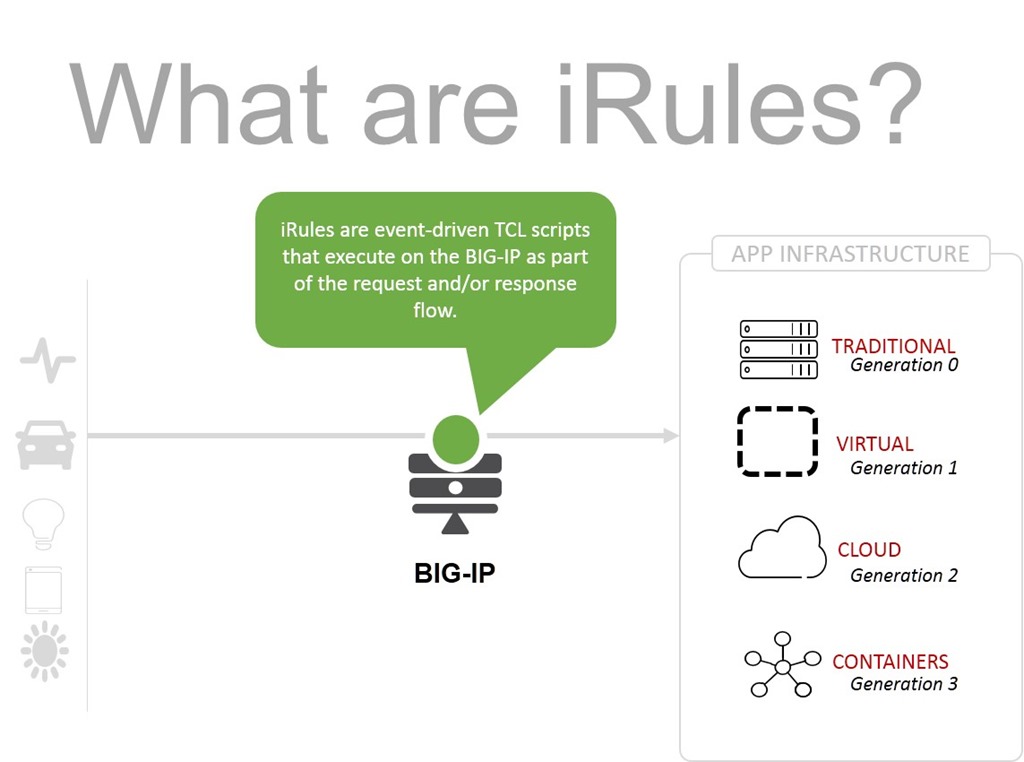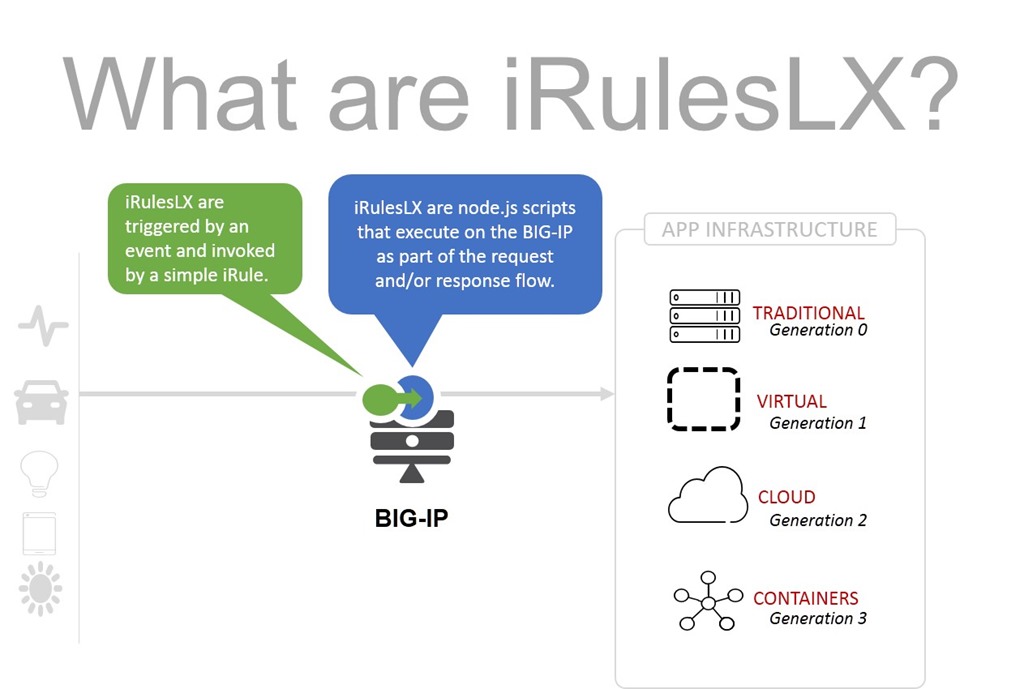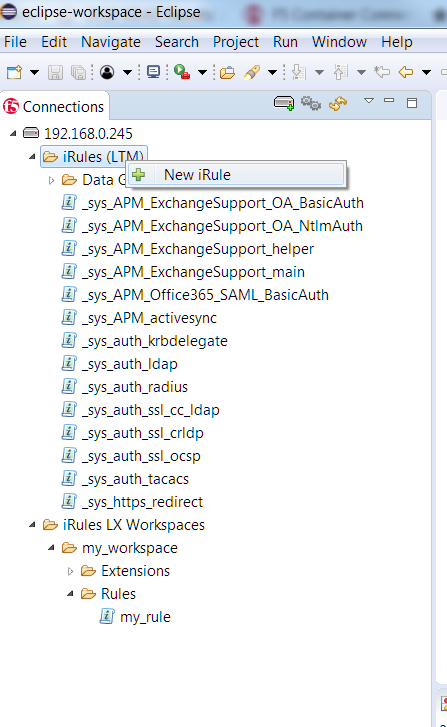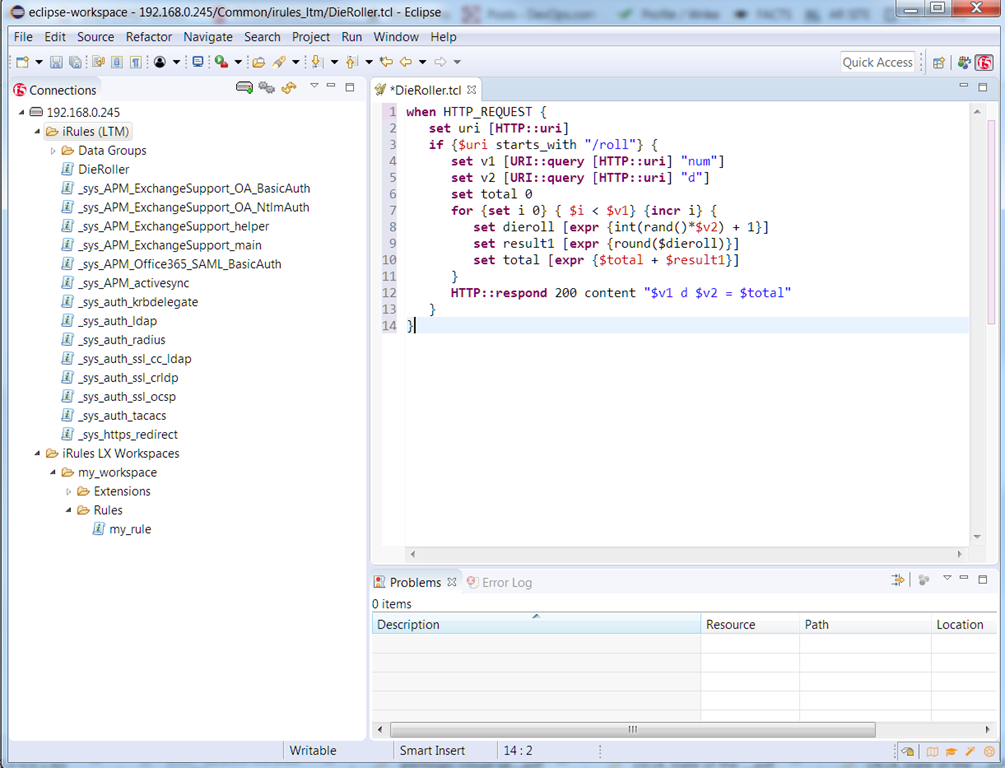オープンソーススポットライト: NetOps 用 F5 Eclipse プラグイン
クイックノート:

- F5 EclipseプラグインはGithubからダウンロードしてインストールできます。
- 私はEclipse Oxygenを使用しています。Super-NetOpsに適用可能なツールとテクノロジーをより適切にサポートしているからです。
- ターゲットとするBIG-IP が少なくとも v12.1 を実行していることを確認してください (私は v12.1.3.3 を使用しました)
告白の時間です。 開発者として、コードを書くときに私が好きなエディターはvim です。
わかってるよ、わかってるよ。 しかし、これは高速で、使い方も分かっていますし、何よりも、これはemacs ではありません。
はい、そこへ行きました。
ただし、公平に言えば、私はもうプロとして開発をしていないので、一般的には完全に機能する IDE のすべての機能は必要ありません。 私がそうするときは(Minecraft の mod に取り組んでいるときなど)、常に Eclipse を使用します。
他の何百万もの開発者も同様であり、これがオープンソース プロジェクトが開始以来劇的に成長した理由の 1 つです。 Eclipse は、最も幅広い言語をサポートするだけでなく、コード エディターとしての控えめな始まりを超えてその範囲を拡大するツールセットもスムーズに統合します。 これには NetOps も含まれており、F5 データ パス スクリプト言語であるiRulesとiRulesLXの両方の開発と展開をサポートする Eclipse プラグインが利用可能であることがそれを証明しています。
両方の簡単な概要/復習: iRules は、リクエスト/レスポンス フローの一部として BIG-IP 上で実行されるイベント駆動型の TCL スクリプトです。iRulesLX は同じタスクを実行しますが、 node.jsで開発できるスクリプトです。 これらは、リクエストまたはレスポンス イベントによってトリガーされ、単純な iRule によって呼び出されます。


TCL または node.js のどちらで開発するかを選択する場合でも、Eclipse プラグインは、構文の強調表示や git などのリポジトリとの統合など、IDE のすべての優れた機能を提供します。 F5 プラグインを使用すると、BIG-IP に簡単に接続し、iRules と iRulesLX の両方を取得、作成、編集、展開できます。

インストールが完了すると(管理 IP アドレスで BIG-IP に接続すると)、既存のすべての iRules および iRuleLX ワークスペースのリストが表示されます。
そこから、右クリックするだけで新しい iRule を作成できます。
私はもう「Hello World」のファンではないので、新しい言語で最初に書くのはたいていサイコロを振るプログラムです。 だって、テーブルトップゲーマーだから。
簡単ですよ。
次に、iRule を右クリックして「BIG-IP に保存」するだけです。
エラーは、BIG-IP の検証ルーチンによって展開時に検出されます。 したがって、エラーが発生した場合 (エラーが発生する可能性は低いですが、誰かが入力ミスをした場合)、BIG-IP に保存 (デプロイ) しようとしたときにプラグインから通知されます。

デプロイが完了したら、仮想サーバーに割り当てるだけで完了です。 さまざまな多面体サイコロからランダムな数字を即座に生成します。
あるいは、アプリやビジネスに関連したものの方が適切かもしれません。
iRules または iRulesLX を使用して何を開発しているかに関係なく、F5 Eclipse プラグインは、iRules または iRulesLX の開発と展開時に BIG-IP とのやり取りを改善する便利なツールです。BIG-IP に直接アクセスする必要がないため、複雑な URL ディスパッチ、機能分解、パーティショニング (シャーディング) スキームなど、さまざまなスケーラビリティ アーキテクチャを実装するために、DevOps が BIG-IP のプログラマビリティを使用するように促すのに最適なツールです。
Eclipse のようなツールを NetOps ツールチェーンの一部として使用すると、インフラストラクチャをコードとして扱うことへの移行や、他のツールやシステムとの統合による真の継続的デプロイメント パイプラインの開発に役立ちます。
今すぐコピーを入手して開発を始めましょう。 どこから始めればよいかわからない場合は、 DevCentral コードシェアにアクセスして、コミュニティが最近何を準備しているかを見てみましょう。 課題に直面したときや、iRules/iRulesLX のような拡張可能な環境に直面したとき、NetOps がいかに創造的になれるかを知ると、驚かれるかもしれません。
コードオン!
